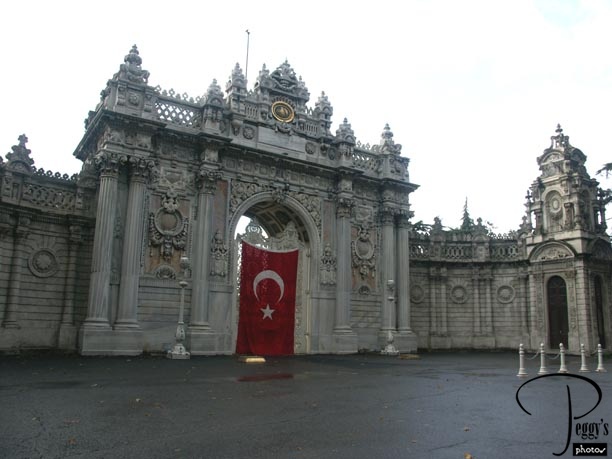Istanbul
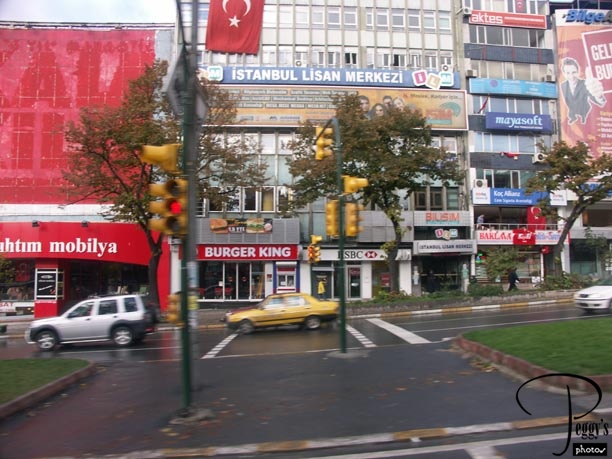
We had a choice of optional excursions to take in Istanbul. I took the Highlights of Istanbul with Lunch, 89 euros. We did not visit every place that was listed in the tour description, including the Grand Bazaar because it is closed on Sundays and today was Sunday. This was greatly disappointing. But we did drive around Istanbul a bit, visited the Blue Mosque, Haghia Sophia, and Topkapi Palace. It was cold, windy, and often raining. My first impression of Istanbul was that it was much more modern than I thought it would be. You can see a Burger King sign in the photo. McDonald’s was just up the street. The red flag is the flag of Turkey. Many flags and pictures of Ataturk, Turkey’s first president, were seen as yesterday was the Turkey National Holiday of Republic Day, commerating the proclamation of the Turkish Republic in 1923.

Istanbul
Istanbul
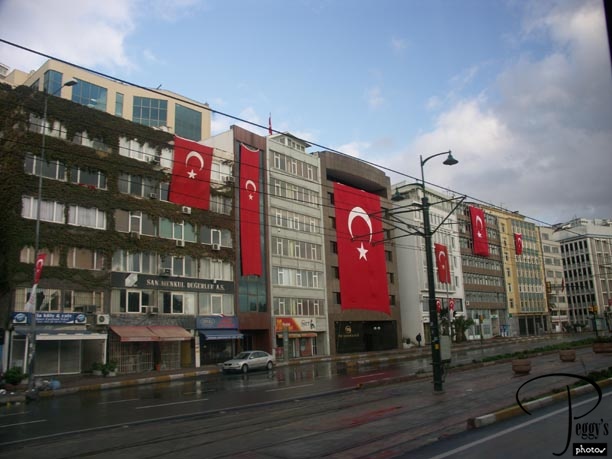
Another street in Istanbul. Turkey is 99% Muslim although their government is secular. We saw many women wearing the hijab––loose clothing and head scarves, but few women wearing a burka––clothing that covers almost their whole body and faces. Our guide was Turkish and a Muslim but did not wear Muslim clothing.

Istanbul

Istanbul
Istanbul
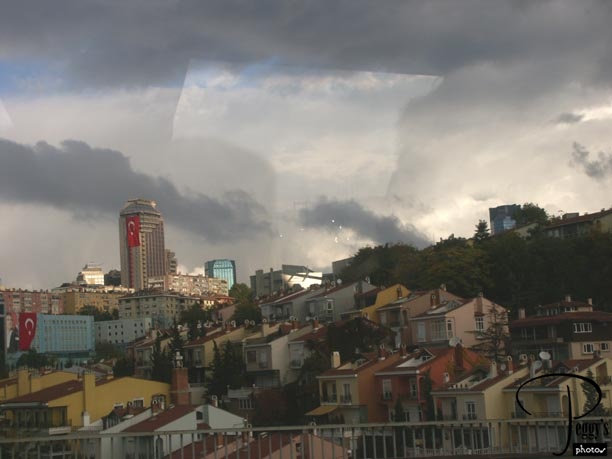
Another view of Istanbul. We were going to cross over the Galata Bridge to travel from Europe to Asia. Istanbul is the dividing point between the European and Asian continents, with one–third of the city being in Asia. The Bosphorus, a strait between the Sea of Marmara, which is the waterway that our ship sailed on to reach Istanbul from the Aegean Sea, and the Black Sea, divides the two continents.

Istanbul
Istanbul
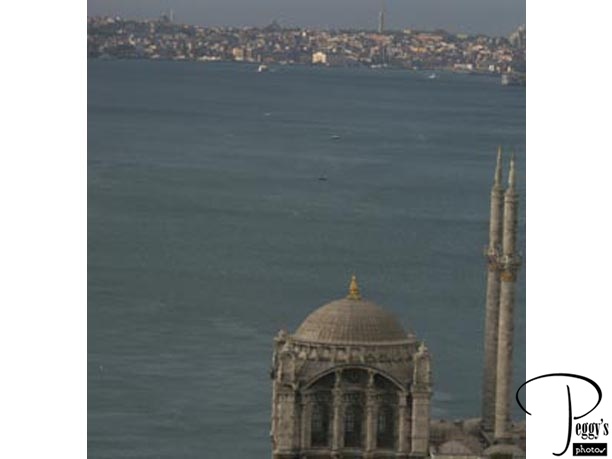
On our way to Asia. View of Europe from the bridge.

Istanbul
Istanbul
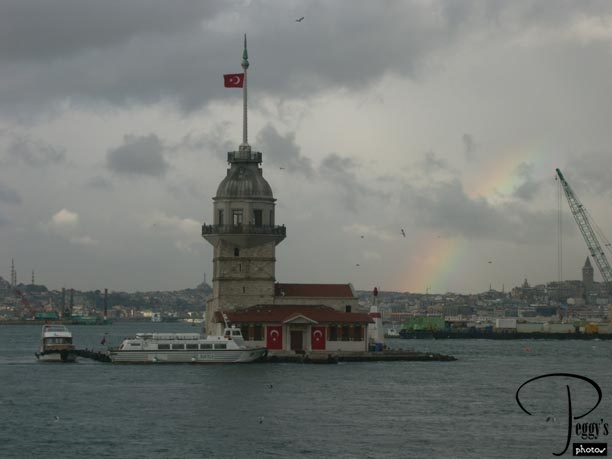
Lender’s Tower, taken from the Asian side. We were encouraged, weatherwise, by the beautiful rainbow, but more rain was to come. There is a restaurant and cafe on the little island.

Istanbul
Istanbul
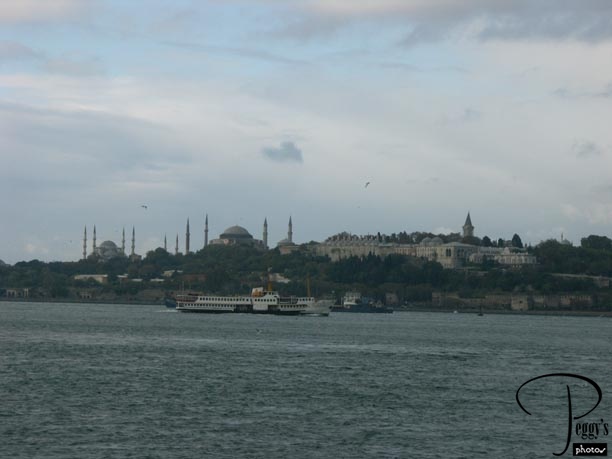
View of the Old City of Istanbul on the European side taken from Asia. From the left of the photo: the Blue Mosque, Haghia Sophia, and Topkapi Palace.

Istanbul
Istanbul
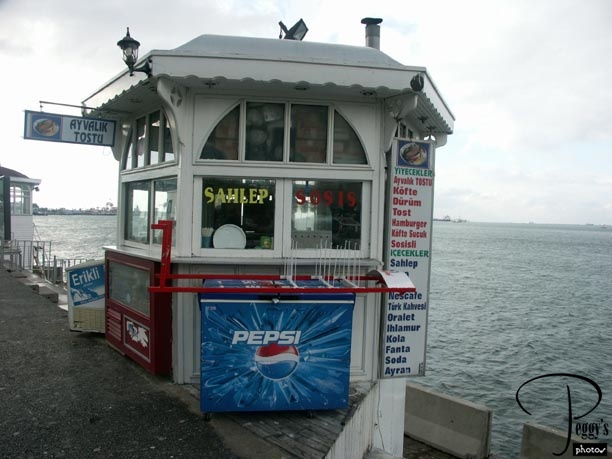
Turkish fast food stand. Hamburgers were on the menu.

Istanbul
Istanbul
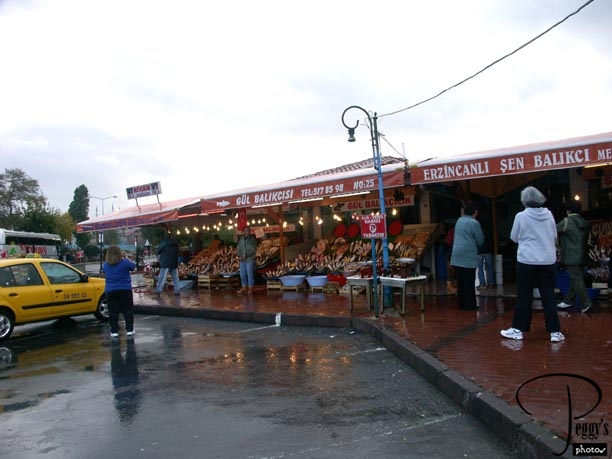
After driving around Asia for awhile, we recrossed the Galata Bridge and returned to Europe. We stopped at the Fish Market.

Istanbul
Istanbul
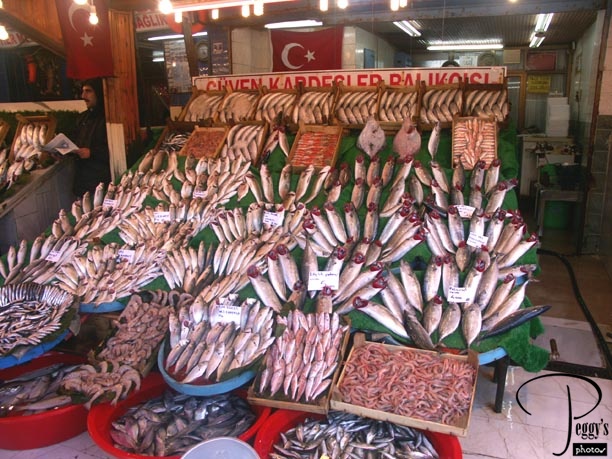
Artistic display of fish.

Istanbul
Istanbul
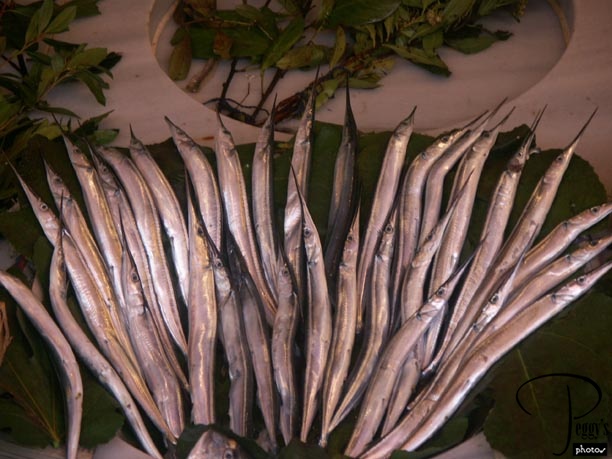
I assume that these are eels.

Istanbul
Istanbul
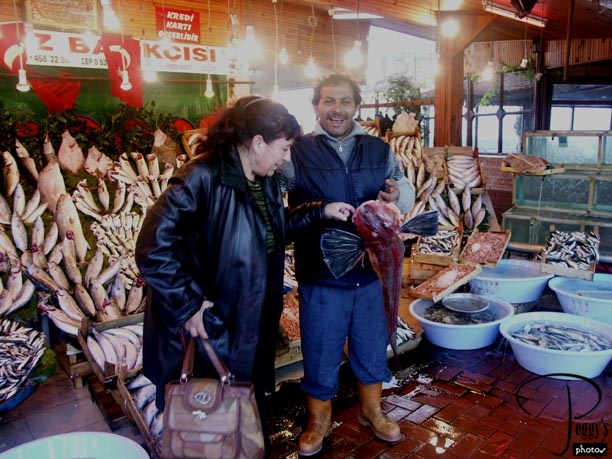
It looks like this woman is trying to see if the fish will bite her.

Istanbul
The Blue Mosque
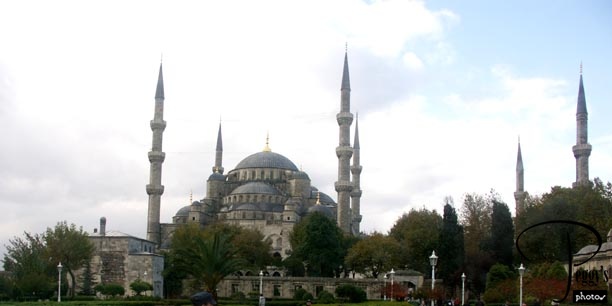
We next entered the Historic Section of Istanbul. Our first stop was at the Blue Mosque. The Blue Mosque gets its name from the blue Iznik tiles inside it. The mosque was commissioned by Sultan Ahmet I between 1609–16 when Turkey was part of the Ottoman Empire. It has six minarets (the tall towers). A muezzin would call the devout to prayer five times a day from a minaret. Today, it is usually done over a loudspeaker.

The Blue Mosque
The Blue Mosque
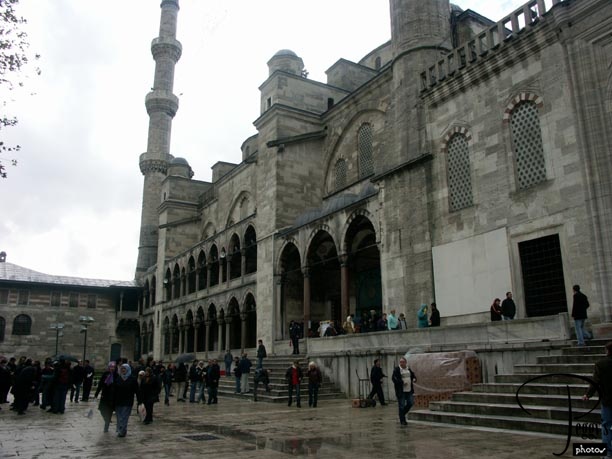
Entrance to the Blue Mosque. We had to remove our shoes to enter the mosque. We were given plastic bags to carry our shoes in.

The Blue Mosque
The Blue Mosque
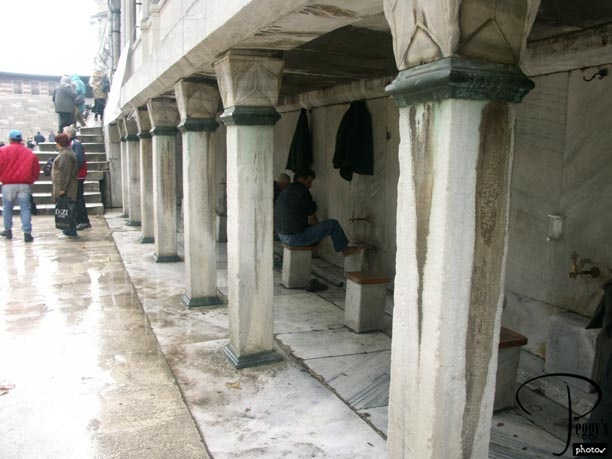
There is a Muslim ritual ablution before they enter a mosque. Faces, hands, and feet are washed either at the mosque fountain or under water taps on the wall of the mosque. These devout Muslims are preforming the abultion.

The Blue Mosque
The Blue Mosque
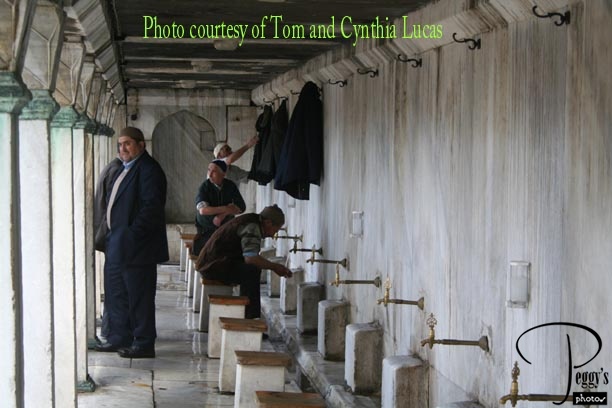
This more adventurous photo of the ablution ritual is from Tom and Cindy Lucas.

The Blue Mosque
The Blue Mosque
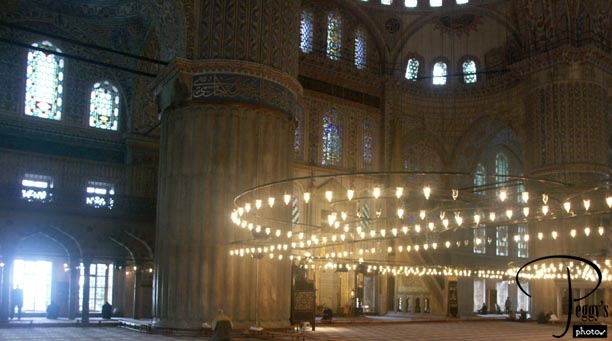
Inside the Blue Mosque.

The Blue Mosque
The Blue Mosque
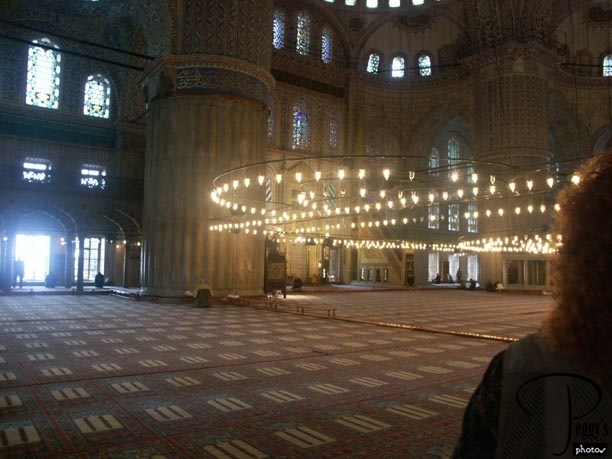
The mimbar (in the middle of the photo), similar to a pulpit, where the imam stands during the Friday prayers.

The Blue Mosque
The Blue Mosque
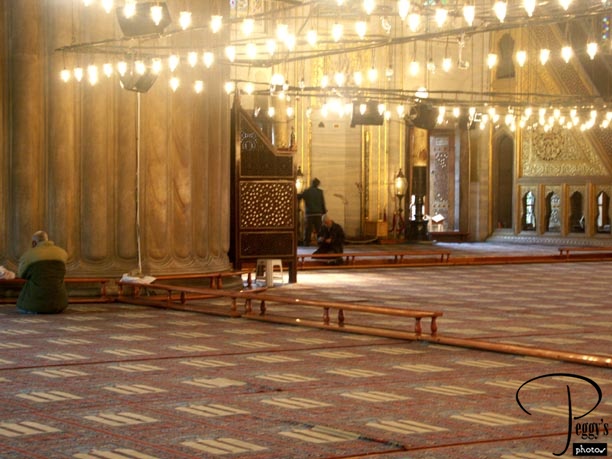
The devout in prayer.

The Blue Mosque
The Blue Mosque
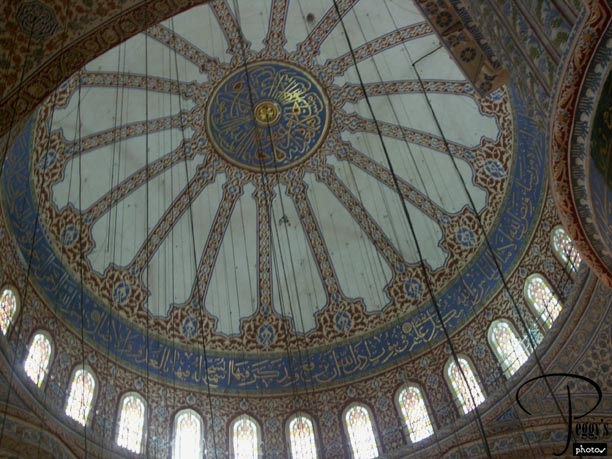
Inside of the main dome.

The Blue Mosque
The Blue Mosque
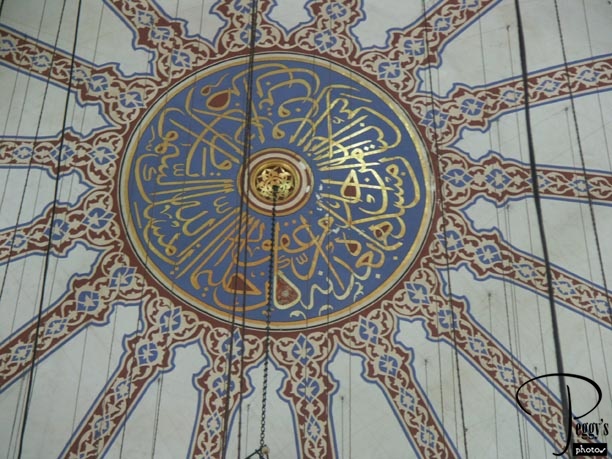
Close–up of the dome.

The Blue Mosque
The Blue Mosque
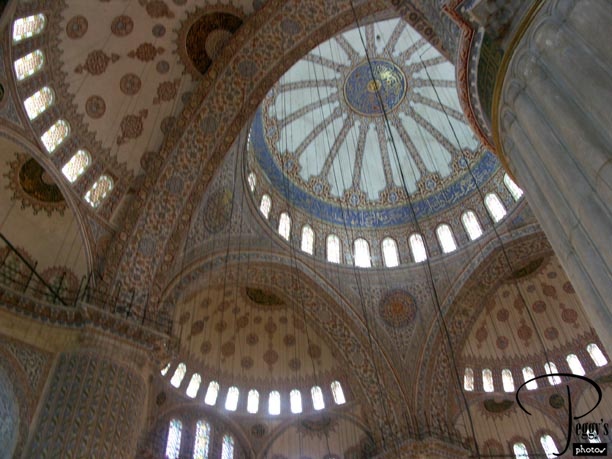
The main dome and smaller domes.

The Blue Mosque
The Blue Mosque
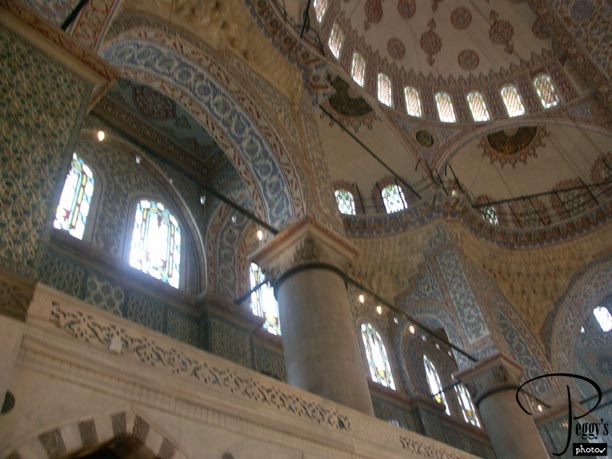
One of the balconies.

The Blue Mosque
The Blue Mosque
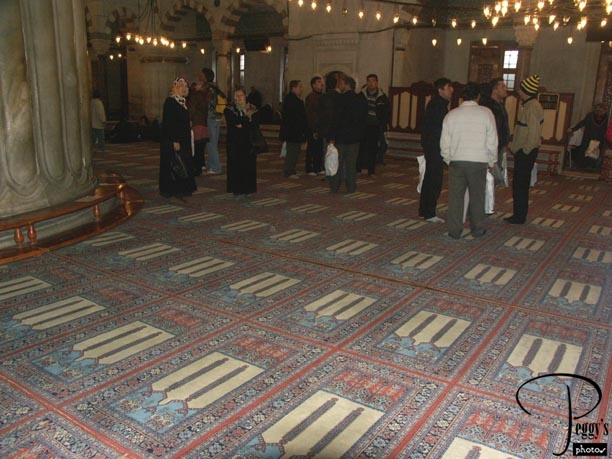
The carpeting.

The Blue Mosque
The Blue Mosque
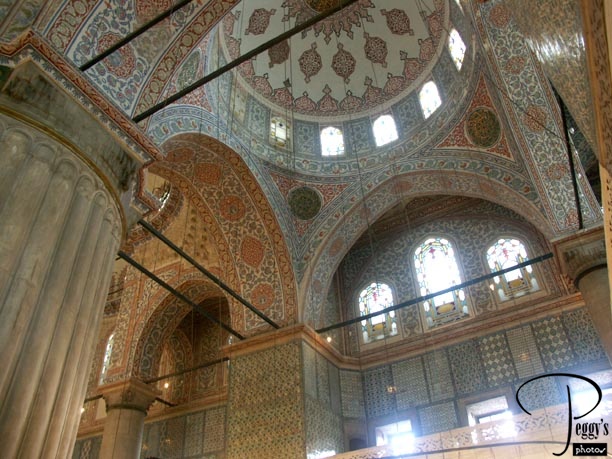
The ceiling and the walls.

The Blue Mosque
The Blue Mosque
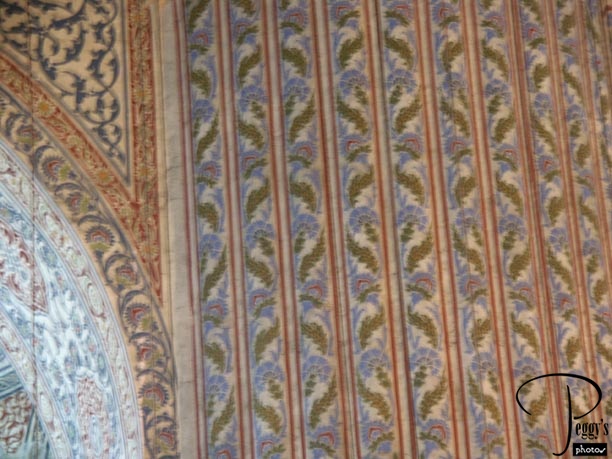
Close–up of the tile.

The Blue Mosque
Haghia Sophia
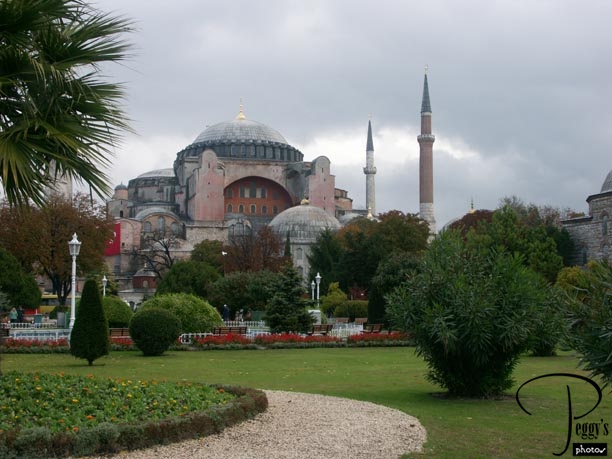
We left the Blue Mosque, put our shoes back on, and headed across a small park to the Haghia Sophia. The Haghia Sophia was built as a Christian church in 537 A.D. during the time when Istanbul (Constantiople) was the Byzantine capital. The Ottomans converted it into a mosque in the 15th century and added the minarets.

Haghia Sophia
Haghia Sophia
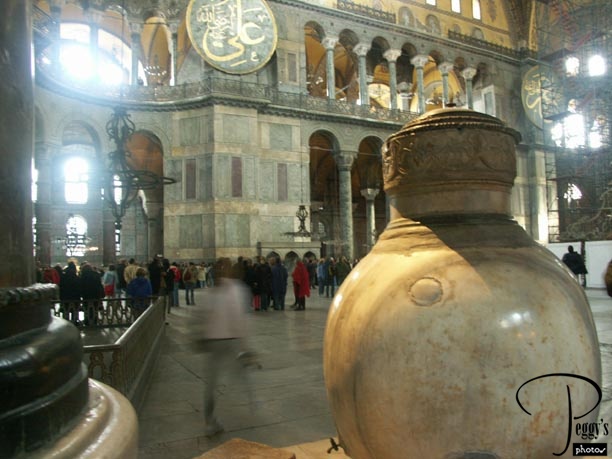
One of the two marble jars in the mosque and the inside of the church. That is scaffolding on the right of the photo.

Haghia Sophia
Haghia Sophia
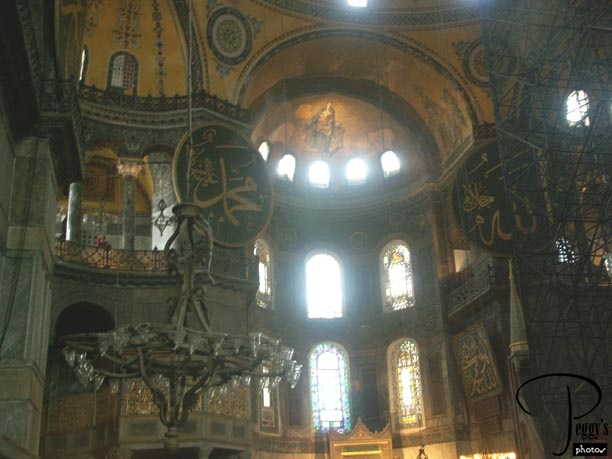
Inside the Haghia Sophia. The calligraphic roundels (the round disks) were added during the 19th century. You can also see a mosaic at the top of the photo––it is of the Virgin Mary and Jesus. Even though today the Haghia Sophia is a mosque, the original Christian mosaics have been left.

Haghia Sophia
Haghia Sophia
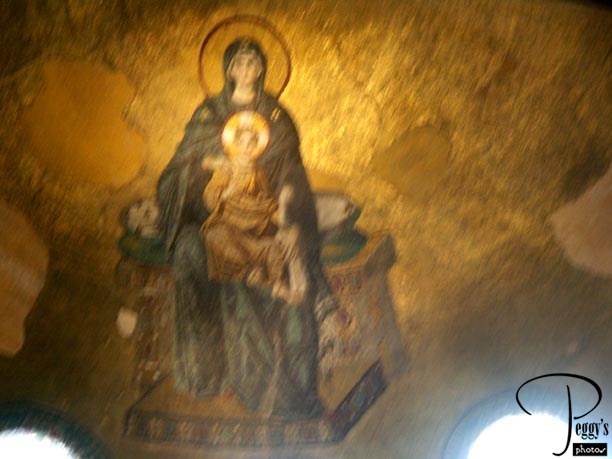
Close–up of the mosaic of the Virgin Mary and Jesus.

Haghia Sophia
Haghia Sophia

Inside the mosque.

Haghia Sophia
Haghia Sophia
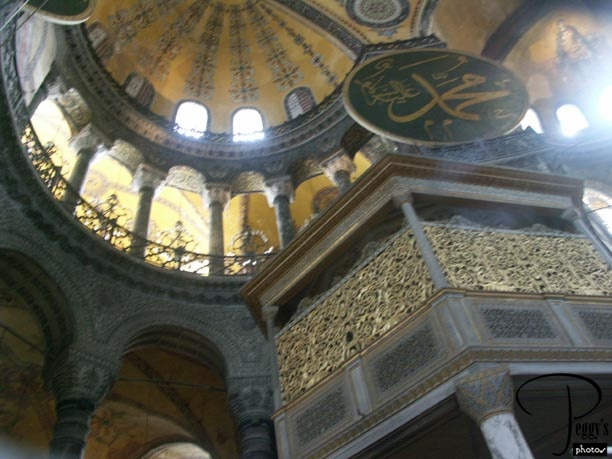
Another view.

Haghia Sophia
Haghia Sophia
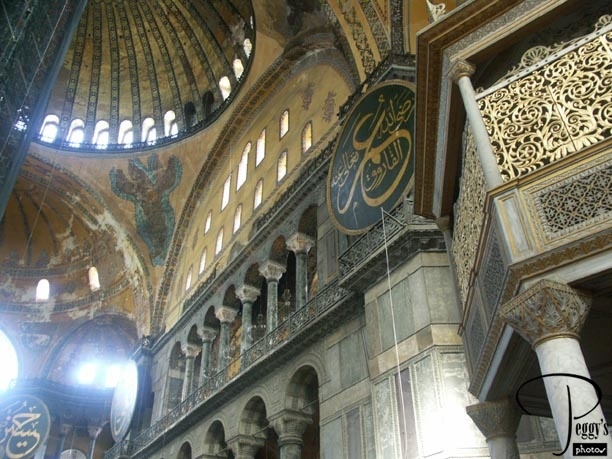
Another view.

Haghia Sophia
Haghia Sophia

The mimbar.

Haghia Sophia
Haghia Sophia
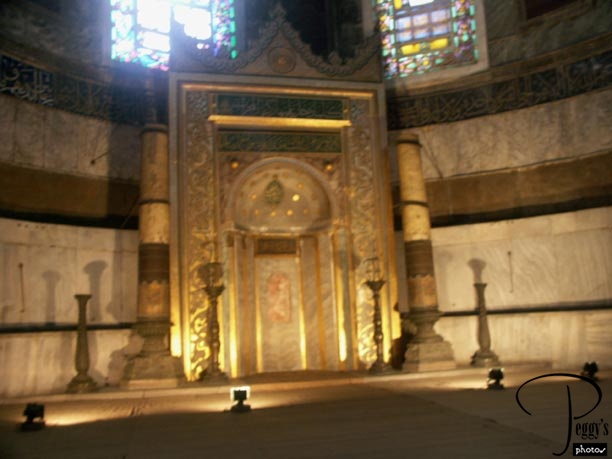
I believe that this is the mihrab, a niche that indicates the direction of Mecca.

Haghia Sophia
Haghia Sophia
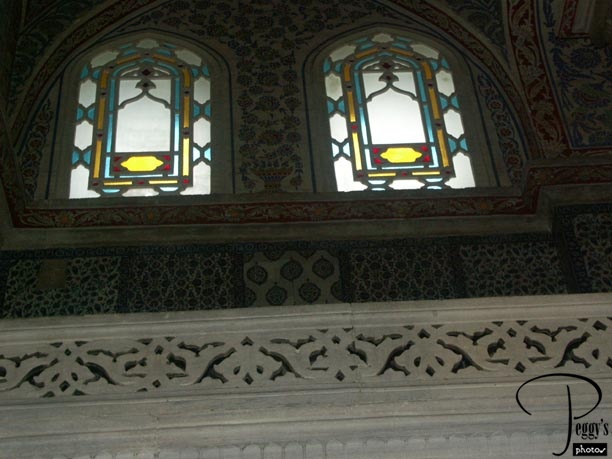
Stained–glass windows.

Haghia Sophia
Haghia Sophia
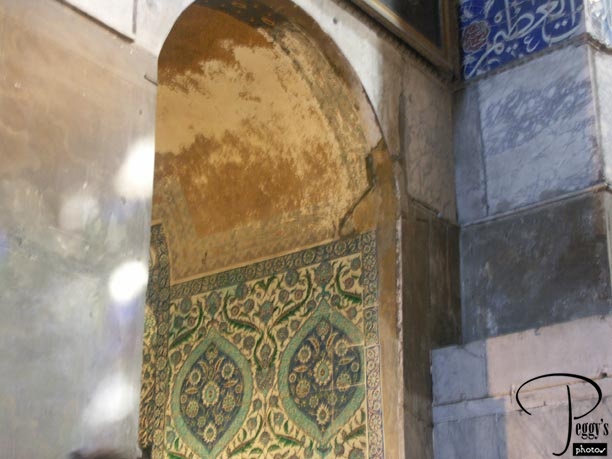
The tile work.

Haghia Sophia
Haghia Sophia
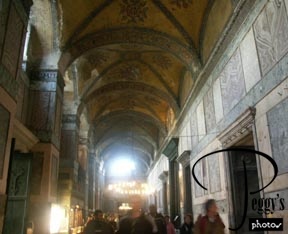
Another view of the inside of the Haghia Sophia.

Haghia Sophia
Haghia Sophia
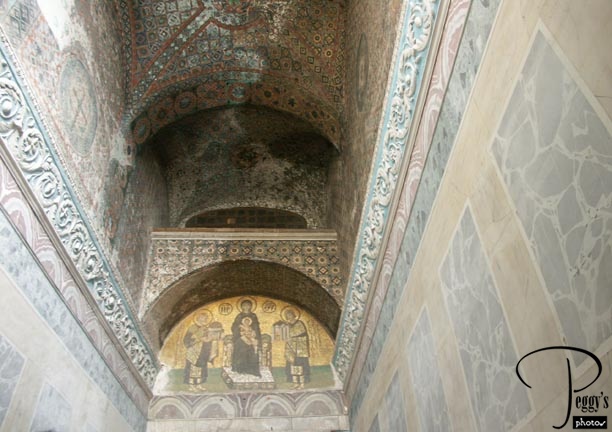
Mosaics at the exit of the Virgin Mary with Emperors Constantine and Justinian.

Haghia Sophia
Haghia Sophia
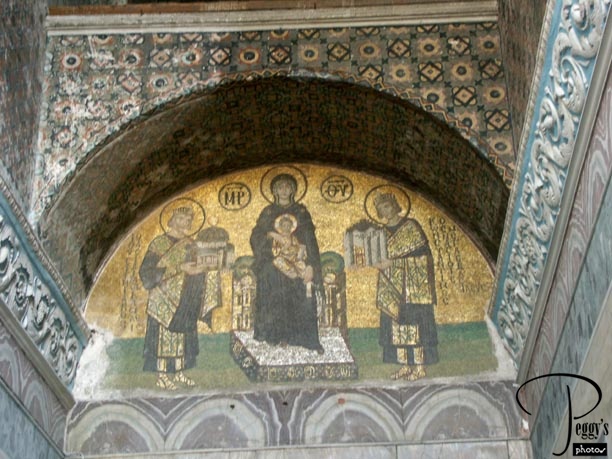
A close–up of the mosaic.

Haghia Sophia
Haghia Sophia
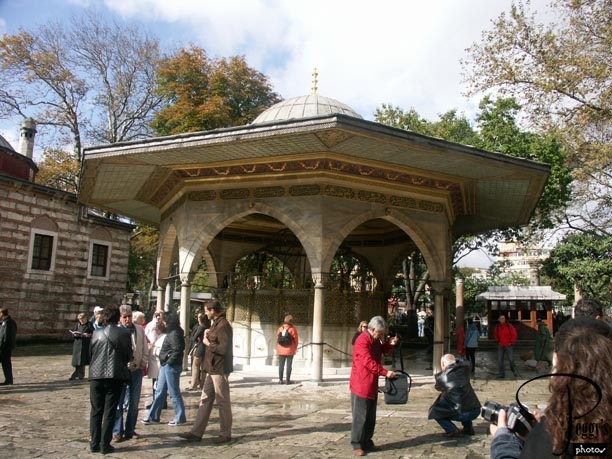
The Ablutions Fountain, built about 1740.

Haghia Sophia
Istanbul
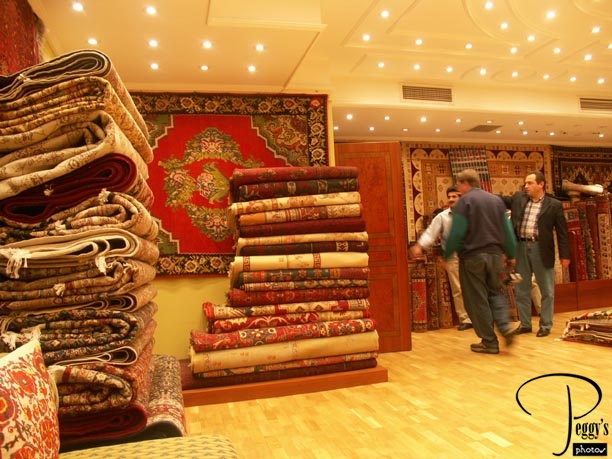
Our next stop after visiting the Haghia Sophia was at a Turkish rug store. Here are the rugs all stacked up.

Istanbul
Istanbul
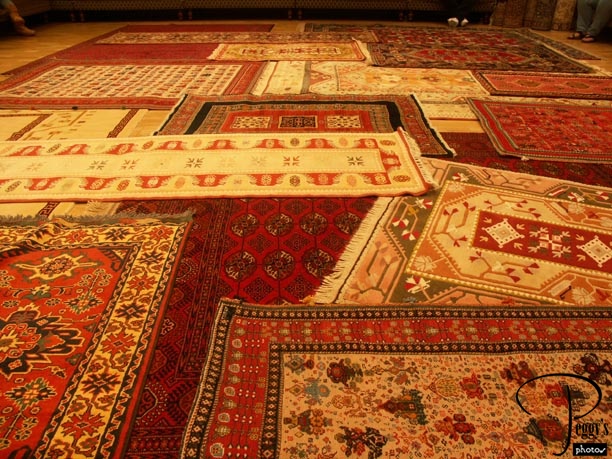
The rugs laid out for us. We were told that if Turkey is allowed into the European Union and goes on the euro that any rug that we bought this day would be worth four times as much in the future.

Istanbul
Istanbul

I didn’t buy a rug although some of our tour group did. I liked this rug in the photo, but the price was definitely not right: $17,000. Downstairs from the rugs was a jewelry store. Turkey is known for its bargains in gold jewelry and gem stones, mainly emeralds. While making a purchase here as a present for my daughter, we could hear the call to prayer over a loudspeaker.

Istanbul
Istanbul
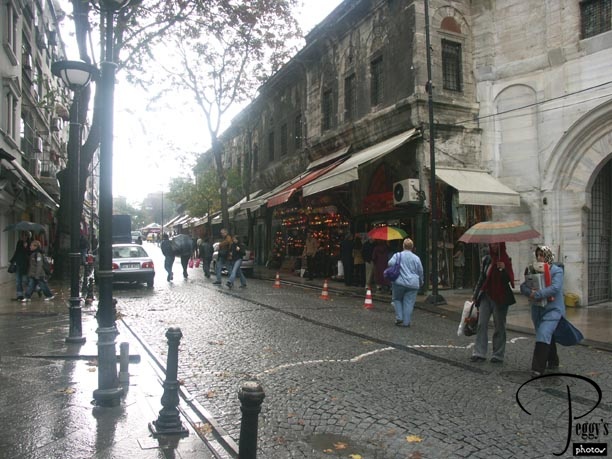
We were given a short period of time to shop at a small bazaar near the rug/jewelry store.

Istanbul
Istanbul
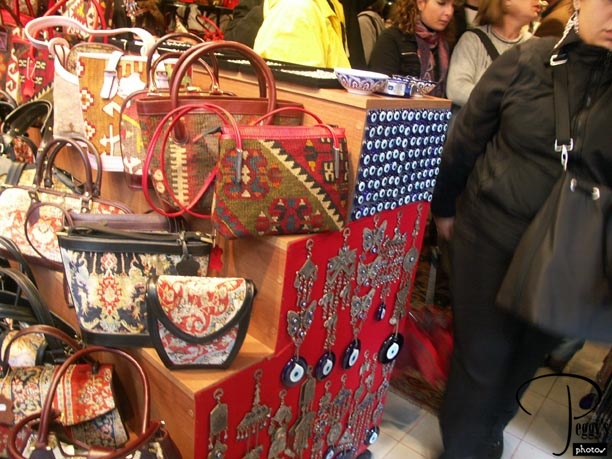
Merchandise for sale. The shopkeepers came out to greet us. The first one said to me: “Come inside and let me help you spend your money.” The second shopkeeper told me, “I don’t cheat as much as my neighbor.” A street vendor asked me if I wanted to buy “an original fake watch.” Incidently, Turkey is known for making such good designer fakes that they are a major purchase for tourists.

Istanbul
Istanbul
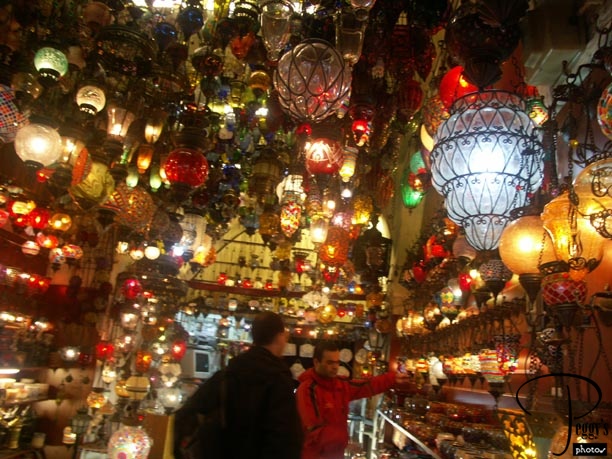
Turkish lamps for sale. I think that most of our group tried to make it back to the bus even before our time was up to do so as the street vendors would not leave us alone. They would not take no for an answer. I asked Sabina, our Trafalgar guide, if it was a bad as this at the Grand Bazaar––she said it was much worse.

Istanbul
Topkapi Palace
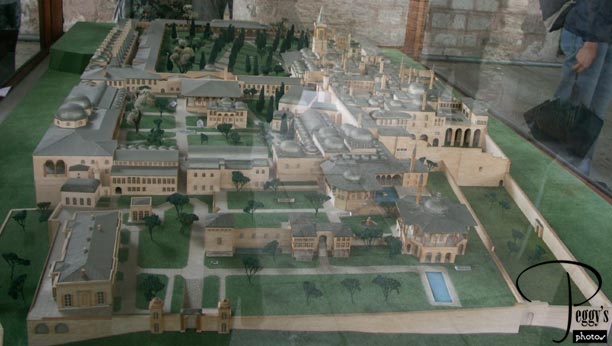
Our next and last stop was at Topkapi Palace, where we had a Middle Eastern–type lunch. Topkapi Palace was built in 1467 by Sultan Mehmet II, the conqueror of Istanbul. This photo shows a model of the palace.

Topkapi Palace
Topkapi Palace
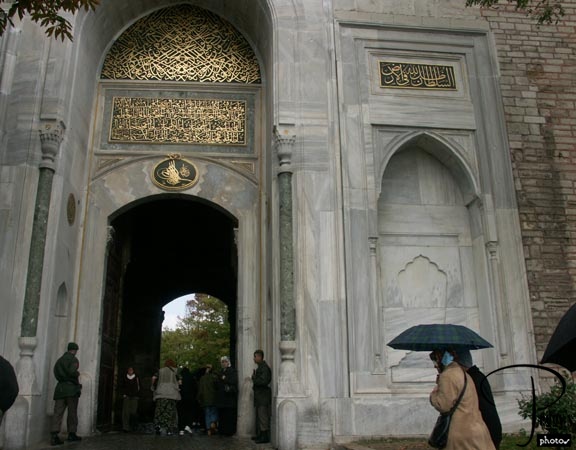
We entered the palace through the Imperial Gate to enter the first court.

Topkapi Palace
Topkapi Palace
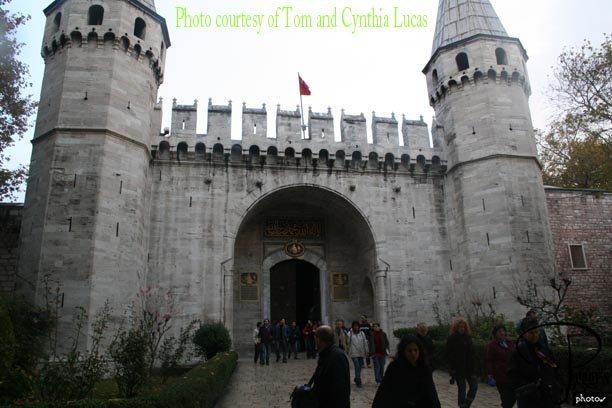
Then we went through the Bab–us–Salam (Gate of Salutation) to enter the second court. (Photo courtesy to Tom and Cindy Lucas.)

Topkapi Palace
Topkapi Palace
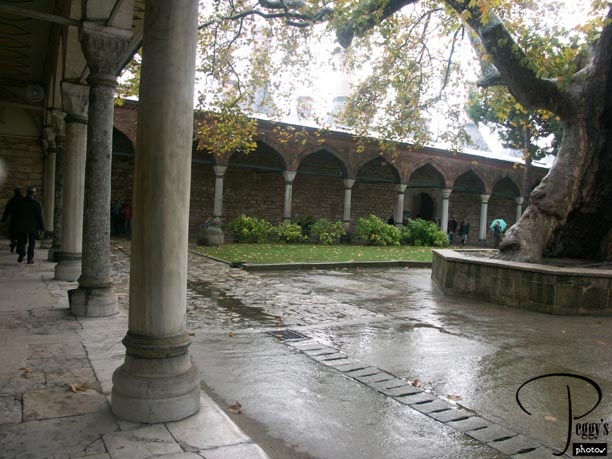
In the second court are the kitchens of the palace. Now, the kitchens house Chinese, Japanese, Turkish, and European porcelain and crystal.

Topkapi Palace
Topkapi Palace

Some of the items on display in the kitchen. (Photos taken from a book I bought on Topkapi Palace.)

Topkapi Palace
Topkapi Palace
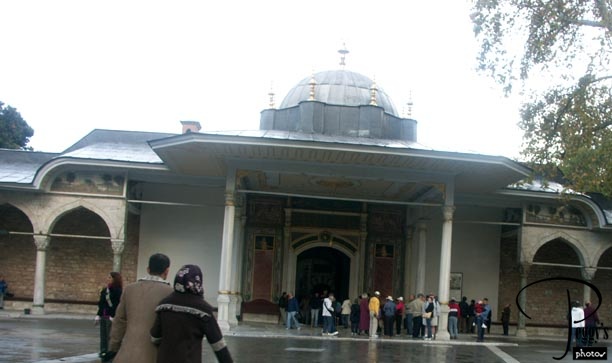
A third gate took us into the third court: Gate of Bab–us–Saadet (Gate of Felicity). The gate dates back to the 15th century with 18th century decorations. Important events were held in front of this gate.

Topkapi Palace
Topkapi Palace
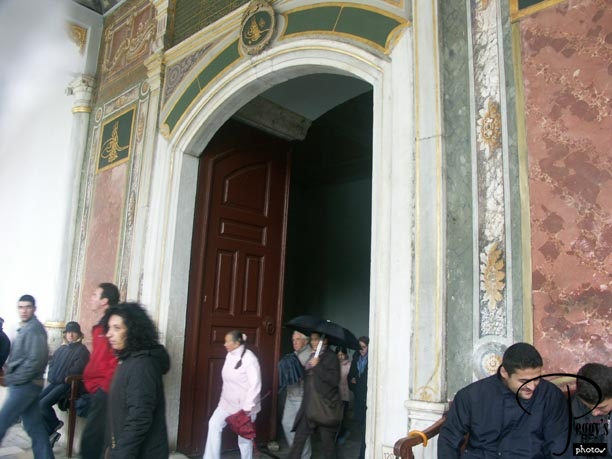
Close–up of the gate.

Topkapi Palace
Topkapi Palace
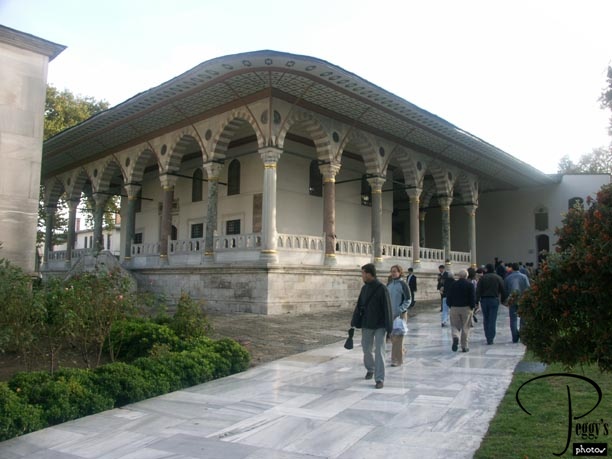
The Audience Hall.

Topkapi Palace
Topkapi Palace
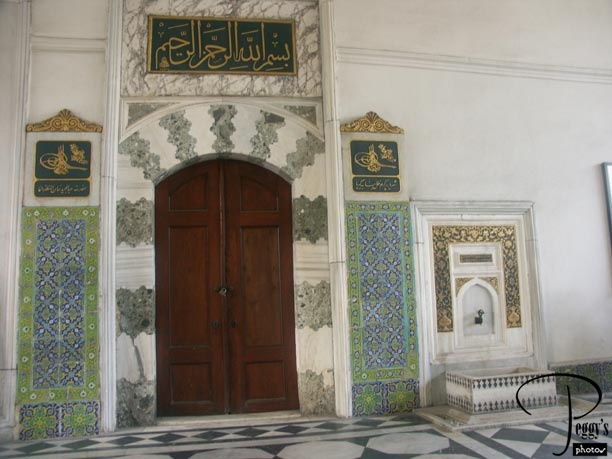
15th century door and fountain in front of the audience hall.

Topkapi Palace
Topkapi Palace
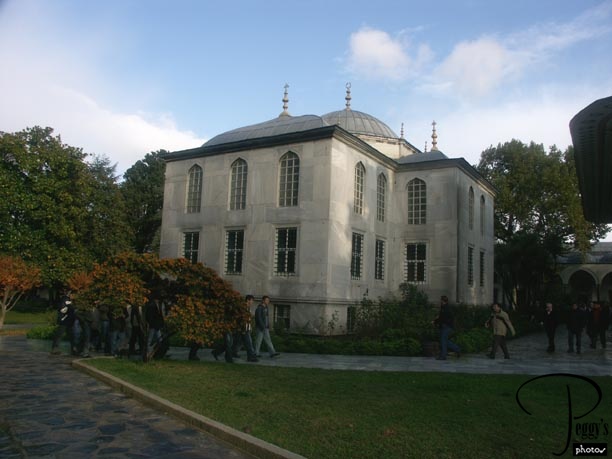
Library of Sultan Ahmet III.

Topkapi Palace
Topkapi Palace
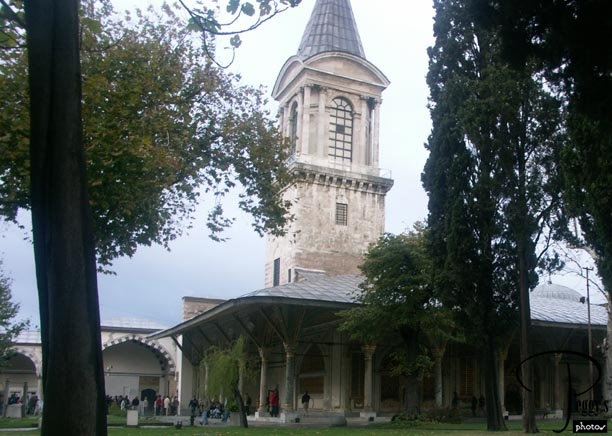
Observation tower above the “Divan”––the council hall. It was the meeting place of the Privy Council.

Topkapi Palace
Topkapi Palace
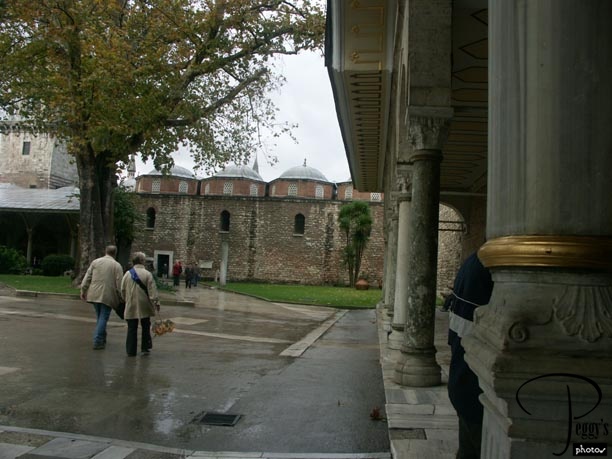
In the middle back, the old Treasury, now housing an arms collection.

Topkapi Palace
Topkapi Palace
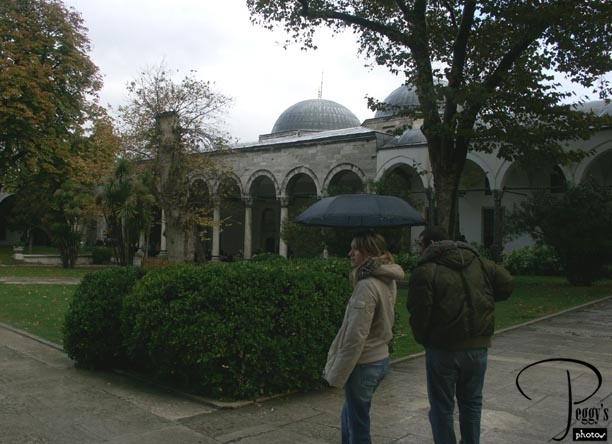
The Treasury is now housed in these buildings. It was very crowded inside the four rooms that make up the Treasury. No photos were allowed inside, but I have scanned some photos from my book on Topkapi Palace to put here. The treasures in these rooms were gifts given to the sultans by foreign officials, objects prepared in the palace workshops or passed along to the palace after a death of a statemen, or spoils of war.

Topkapi Palace
Topkapi Palace
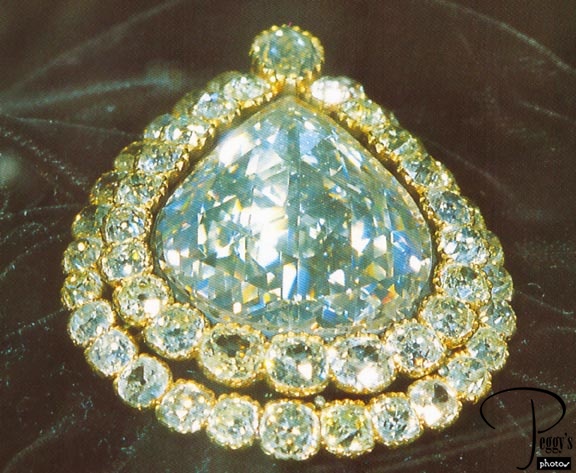
The most famous treasure: the Spoonmaker’s Diamond, one of the largest diamonds in the world. (Although I cannot find a photo of them, but the largest uncut emeralds that you possibly will ever see were also on display. The were breathtaking.)

Topkapi Palace
Topkapi Palace
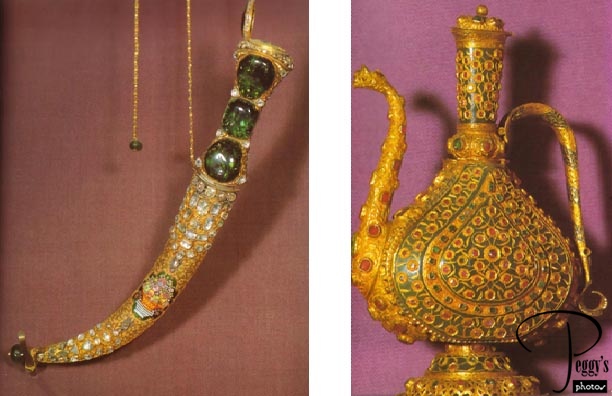
The world–famous dagger “Topkapi” on the left and a jewelled–decorated jade pitcher on the right.

Topkapi Palace
Topkapi Palace
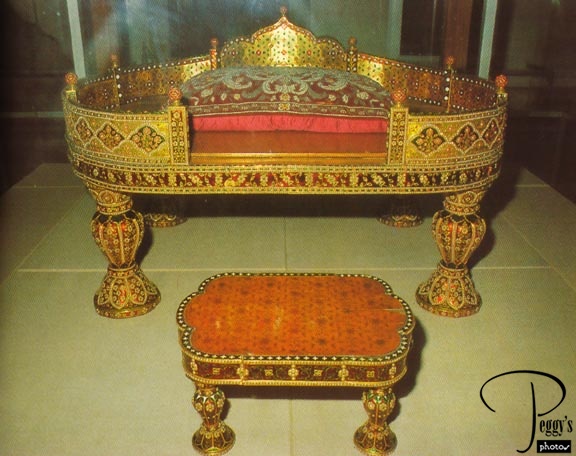
Turkish–Indian throne from the 18th century.

Topkapi Palace
Topkapi Palace
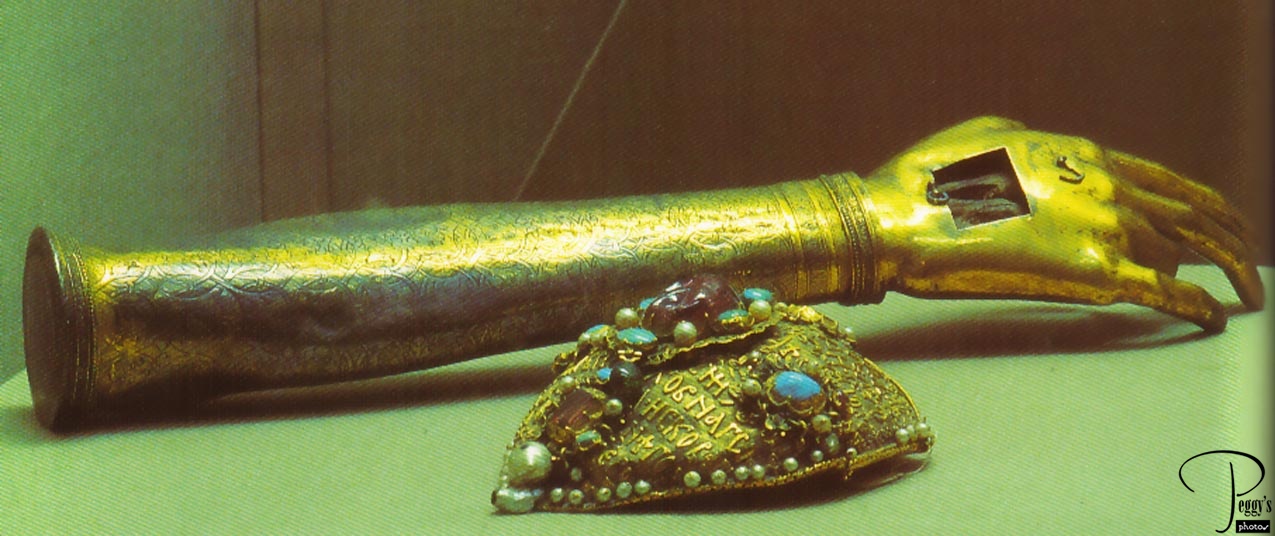
Golden encased hand and arm bones of St. John the Baptist.

Topkapi Palace
Topkapi Palace
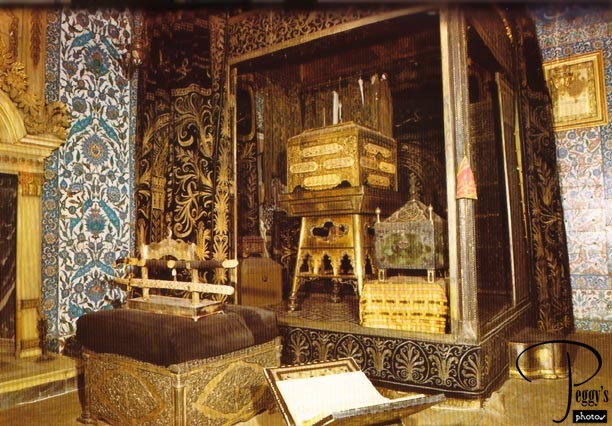
In another building was the Collection of the Sacred Relics, of which many were from the Prophet Mohammed. In the photo (taken from my book on Topkapi Palace) are two swords belonging to Mohammed and also the golden shrine which contains his holy mantel (cloak). Other relics of Mohammed in this section are his seal, his tooth, the hair of his beard, his footprint, and a letter that he wrote.

Topkapi Palace
Topkapi Palace
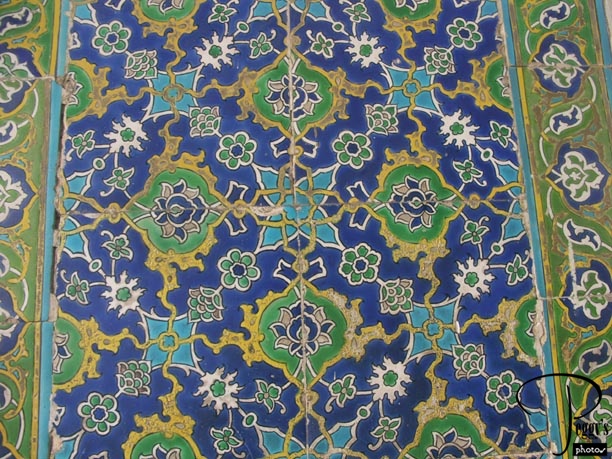
Close–up of the tiles in this section. There is also a fourth court to the palace, with the Harem being one of the buildings. I did not visit the fourth section. We left Topkapi Palace and returned to our ship. We left Istanbul early in the evening and were on our way to our next port of call––the Greek island of Mykonos.

